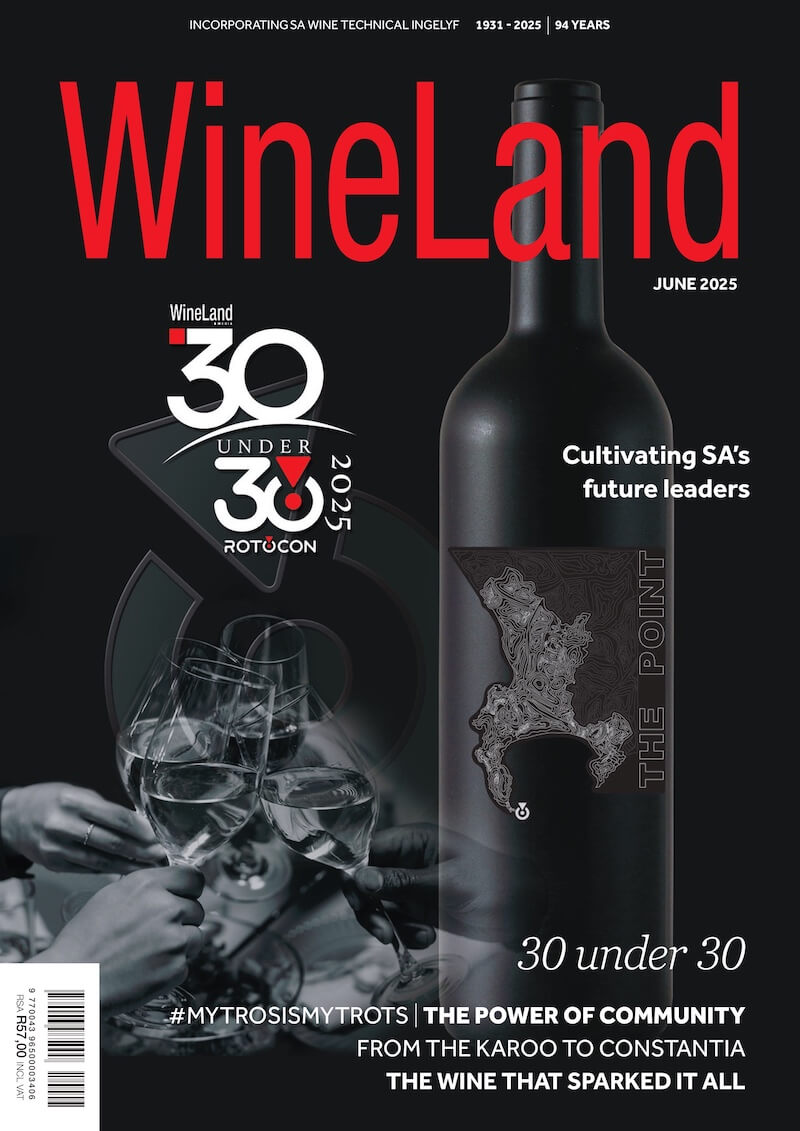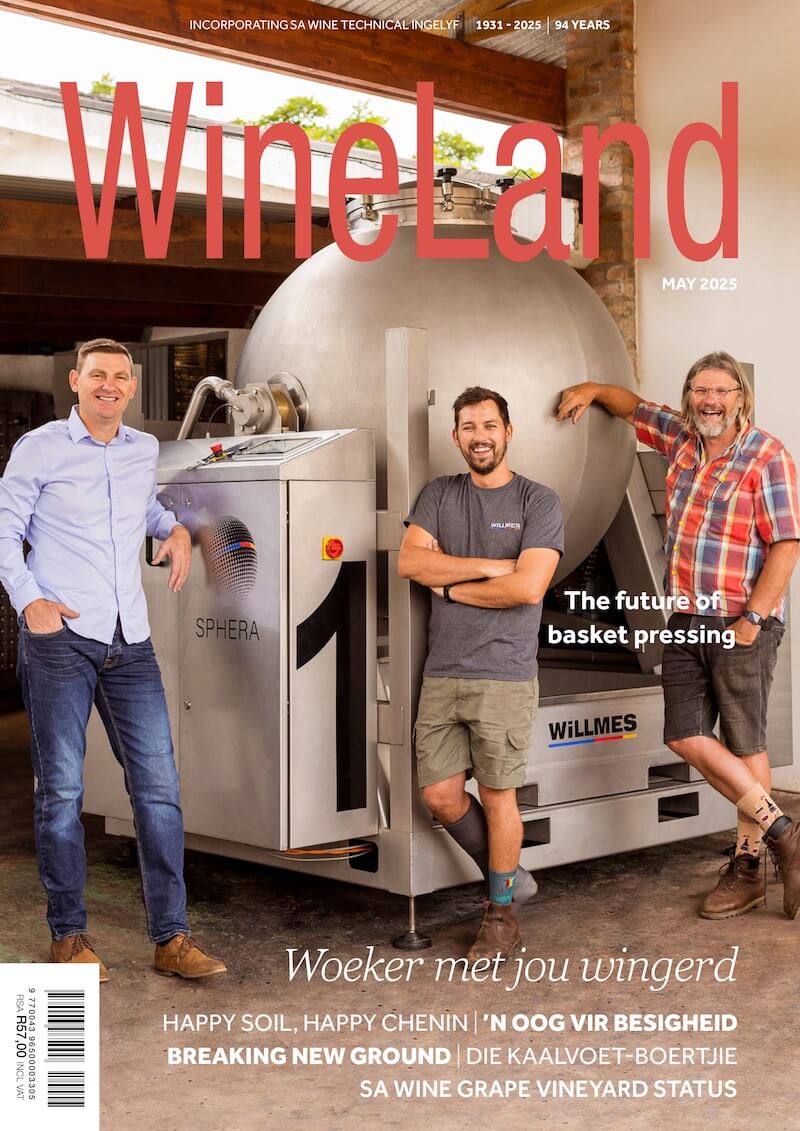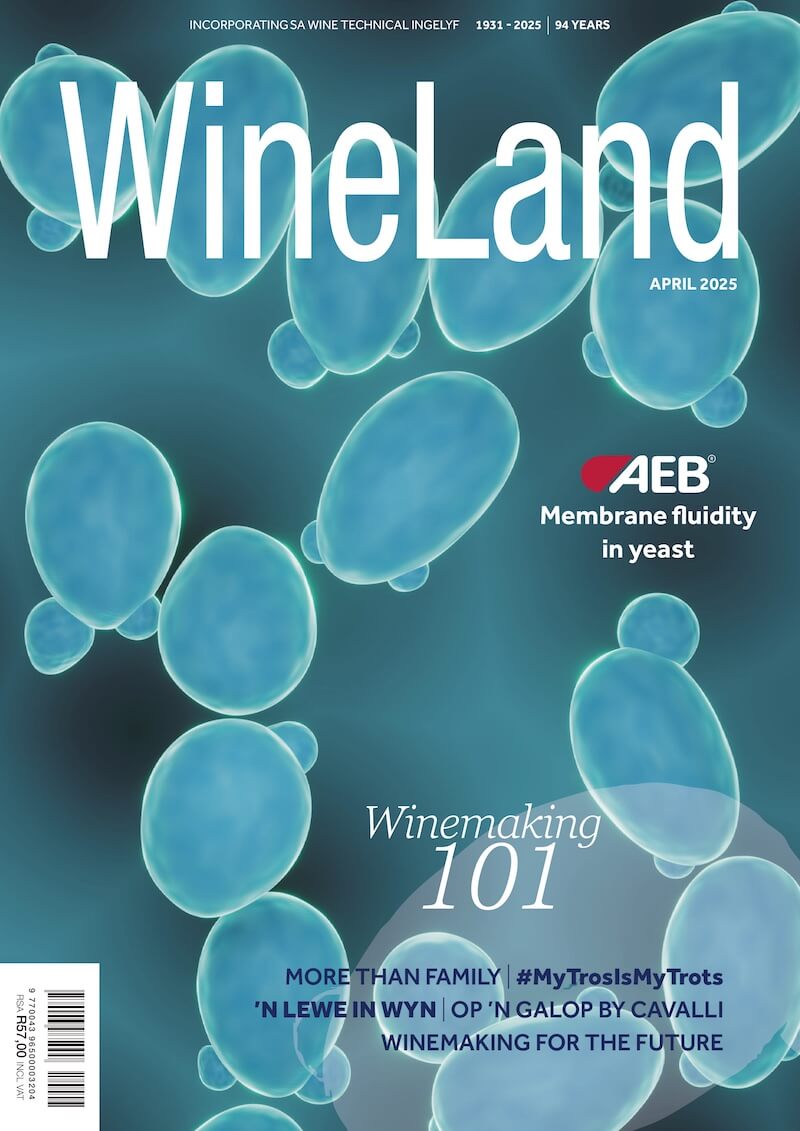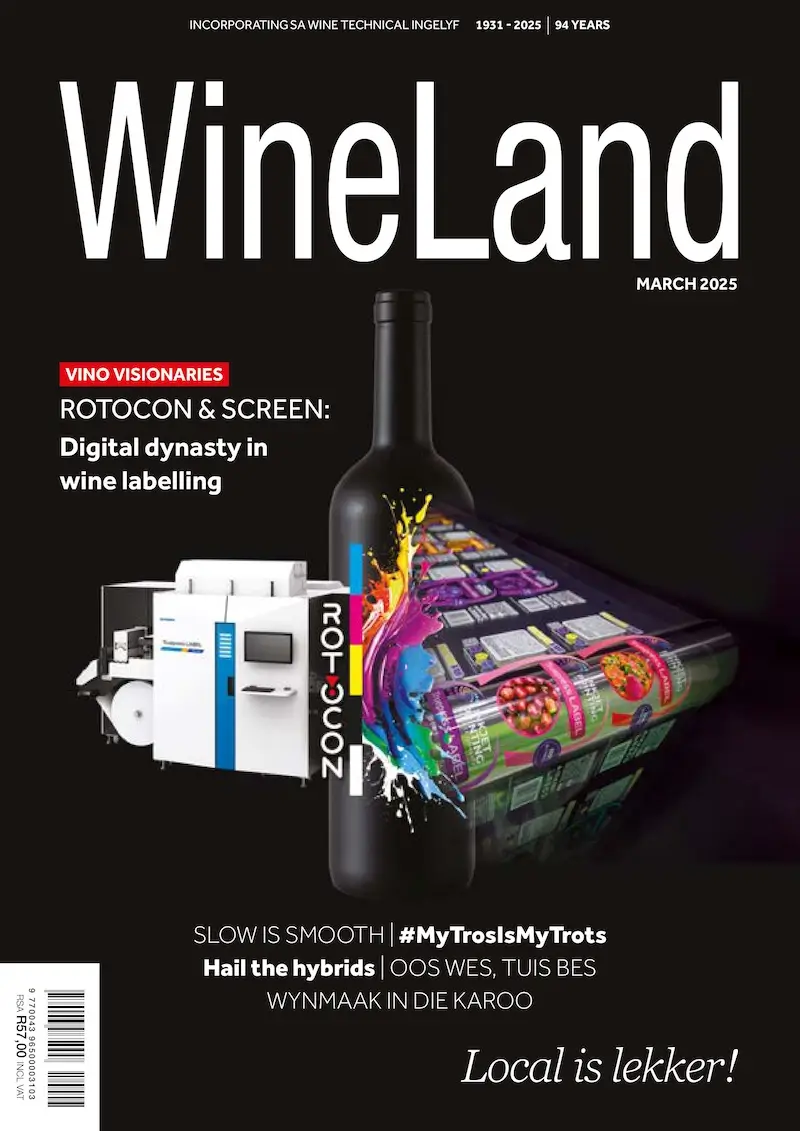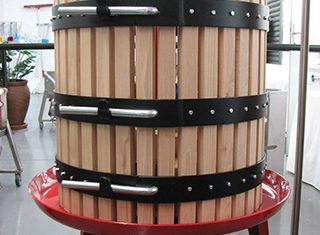
Small scale manual basket press.
The effective recovery of the most possible juice from grape skins is one of the most important actions to ensure that cellars are financially successful. Pressing of the skins is one of the ways to achieve this. Different types of presses were developed over years to execute it and basket presses is one of the types that can be used. Over the course of time it fell into disuse, but with technological advancement equipment was improved, which led to the use of different basket presses by different cellars.
The use of wooden beams, capstans and windlasses to exert pressure on skins in order to extract juice or wine from them, dated back to the Greeks and Romans. Further development of this equipment led to the general use of wooden presses during the seventeenth and eighteenth centuries. The vertical basket press with a metal capstan, which cellars are still familiar with, was introduced in the 1830s and were the presses mostly used in the nineteenth century. Some of these presses are still in use at cellars, that prefer to keep their winemaking traditional. The press action can be executed manually or hydraulically.
Basket presses, which are presently used or available, have different capacities and can consequently be used in the laboratory or wine cellar. It consists of wooden strips or perforated stainless steel and the press action can be executed in different ways. It can be done by a rotating action on a vertical, central metal capstan or by means of hydraulic pressure on a disk on top of the skins. The press action or program used to implement it, can be controlled manually or with a PLC program. As result of the capacity differences, basket presses are mainly used in small to medium size cellars. In latter cellars it is often used together with a final press to extract the most juice from the skins.
On small scale it is usually filled manually, but containers with skins can otherwise be emptied by tipping them or the cellar can be designed to use gravitation for filling the basket press. Like any other separation action the free run juice or wine can be collected separately. Basket presses can be used for white or red wines, although they are mainly used for red wines. The free run can vary from 450 to 500 litres per ton, depending on the cultivar and preceding winemaking procedures. Further juice or wine recovery will depend on the pressure and duration of pressing and can be an additional 200 to 250 litres. The total press cycle can last 1.5 to 24 hours. As result of the liquid’s movement through the skins, a clarification process can occur leading to juice or wine with a relatively low solid percentage. The emptying of basket presses is laborious, before the dry skins can be removed from the cellar. Basket presses with wooden slats are more difficult to clean, because seeds and skins can be fixed between the slats. High pressure water and caustic soda, followed by an acid and water rinse, like for other cellar equipment is however usually used.
Basket presses are usually used by cellars that believe in traditional winemaking and better quality. It is claimed that the better quality can be attributed to the following:
- The press action is soft and the skins are not crushed or disintegrated. This can lead to lower tannin concentrations resulting in soft, better balanced wines.
- The lower solid percentage, as result of the clarifying action by the skins, results in more delicate wines.
- The aeration during pressing creates more colour stability in red wines, but if it is for example not required during white wine making, the press can be covered with canvas and carbon dioxide blown underneath it.
The disadvantages related to basket presses are mainly its limited capacity and required manual labour. Their use is consequently limited to boutique or relatively small cellars (Howard, 2016).
Reference
Howard, C., 2016. Basket pressing – the art of being different. Wine & Viticulture Journal, May/June 2016: 35 – 39.




